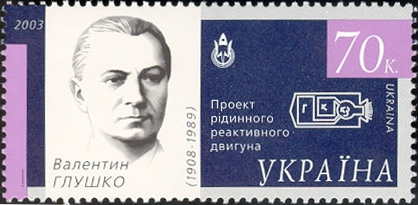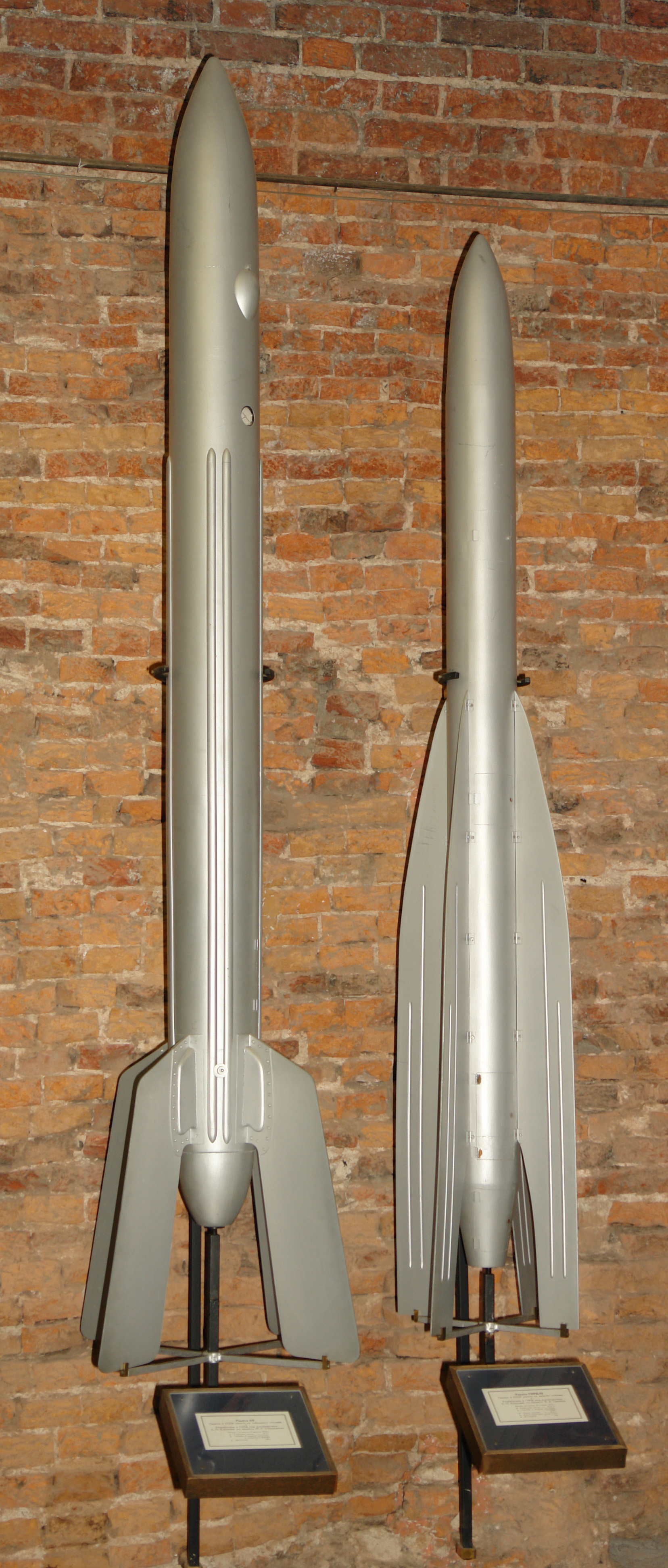|
Liquid Propulsion
A liquid-propellant rocket or liquid rocket utilizes a rocket engine that uses liquid propellants. Liquids are desirable because they have a reasonably high density and high specific impulse (''I''sp). This allows the volume of the propellant tanks to be relatively low. It is also possible to use lightweight centrifugal turbopumps to pump the rocket propellant from the tanks into the combustion chamber, which means that the propellants can be kept under low pressure. This permits the use of low-mass propellant tanks that do not need to resist the high pressures needed to store significant amounts of gasses, resulting in a low mass ratio for the rocket. An inert gas stored in a tank at a high pressure is sometimes used instead of pumps in simpler small engines to force the propellants into the combustion chamber. These engines may have a higher mass ratio, but are usually more reliable, and are therefore used widely in satellites for orbit maintenance. Liquid rockets can be mono ... [...More Info...] [...Related Items...] OR: [Wikipedia] [Google] [Baidu] |
Valentin Glushko
Valentin Petrovich Glushko (russian: Валенти́н Петро́вич Глушко́; uk, Валентин Петрович Глушко, Valentyn Petrovych Hlushko; born 2 September 1908 – 10 January 1989) was a Soviet engineer and the main designer of rocket engines in the Soviet space program during the heights of the Space Race between United States and the Soviet Union. Biography At the age of fourteen he became interested in aeronautics after reading novels by Jules Verne. He is known to have written a letter to Konstantin Tsiolkovsky in 1923. He studied at an Odessa trade school, where he learned to be a sheet metal worker. After graduation he apprenticed at a hydraulics fitting plant. He was first trained as a fitter, then moved to lathe operator. During his time in Odessa, Glushko performed experiments with explosives. These were recovered from unexploded artillery shells that had been left behind by the White Guards during their retreat. From 1924 to 1925 he wro ... [...More Info...] [...Related Items...] OR: [Wikipedia] [Google] [Baidu] |
Leonid Dushkin
Leonid Stepanovich Dushkin (Леонид Степанович Душкин) (August 15, 1910 in the Spirove settlement of the Tver region – April 4, 1990), was a major pioneer of Soviet rocket engine technology. He graduated from Moscow State University with a degree in mathematics and mechanics. In October 1932, he joined Fridrikh Tsander's brigade of GIRD, the Moscow rocket research group. He assisted in the creation of their first rocket engine OR-2, and after Tsander's death, he oversaw the creation of engine "10" which powered the first Soviet liquid-fuel rocket, GIRD-X. Dushkin became part of the Reactive Scientific Research Institute (RNII) when GIRD and the Gas Dynamics Laboratory (GDL) merged in 1933. Dushkin's engines were among the first to be regeneratively cooled, and he also experimented with uncooled engines of high-temperature ceramic. The 12K engines were both types, and powered the Aviavnito rocket. After the arrest of Valentin Glushko, Dushkin took ... [...More Info...] [...Related Items...] OR: [Wikipedia] [Google] [Baidu] |
Korolyov RP-318
The RP-318 or RP-318-1 was USSR's first rocket-powered aircraft or Rocket Glider (Rocketny Planer or Raketoplan) which "RP" stands for in Russian language. Beginning in early 1936 it was first known as RP-218-1 or "Objekt 218" before it was renamed to RP-318-1 in 1938 due to inner reforms of the Rocket Science And Research Institute. Built at the Reactive Scientific Research Institute in 1936 by Sergei Korolev as an adaptation of his SK-9 glider, the RP-318 was originally designed as a flying laboratory to test rocket engines and ORM-65 designed by Valentin Glushko was the one selected to be used. In 1938, when both Korolev and Glushko were arrested in suspicion of Anti-Soviet activity, development of the RP-318-1 was continued by Alexei Scherbakov ( Щербаков, Алексей Яковлевич) and Arvid Pallo ( Палло, Арвид Владимирович), culminating in the first powered flight on Feb. 28, 1940. Test pilot V. P. Fedorov ( Владимир Павлов ... [...More Info...] [...Related Items...] OR: [Wikipedia] [Google] [Baidu] |
Reactive Scientific Research Institute
Reactive Scientific Research Institute (commonly known by the joint initialism RNII; russian: Реактивный научно-исследовательский институт, Reaktivnyy nauchno-issledovatel’skiy institut) was one of the first Soviet research and development institutions to focus on rocket technology. RNII developed the Katyusha rocket launcher and its research and development were very important for later achievements of the Soviet rocket and space programs. History The 'Reactive Scientific Research Institute' (RNII) was officially established on 21 September 1933 by combining the Group for the Study of Reactive Motion (GIRD) with the Gas Dynamics Laboratory (GDL). Personnel based in Leningrad were relocated to Moscow. Background Before 1931 there were two Soviet organizations devoted to researching rocket technology, the Leningrad-based GDL, and the mainly Moscow-based GIRD. The benefits of combining the two groups were recognized, particularly by Mar ... [...More Info...] [...Related Items...] OR: [Wikipedia] [Google] [Baidu] |
Asif Azam Siddiqi
Asif Azam Siddiqi is a Bangladeshi American space historian and a Guggenheim Fellowship winner. He is a professor of history at Fordham University. He specializes in the history of science and technology and modern Russian history. He has written several books on the history of space exploration. Early life and education Siddiqi was born to Hafiz G. A. Siddiqi, Vice-Chancellor of North South University in Dhaka and Najma Siddiqi, a retired professor of philosophy at Jahangirnagar University. Siddiqi received his bachelor's and master's from Texas A&M University. He passed SSC from St Joseph Higher Secondary School, Dhaka. He then completed his M.B.A. from the University of Massachusetts-Amherst and received his Ph.D. from Carnegie Mellon University in 2004 under a National Science Foundation Fellowship to study Cold War science and technologies. Career Siddiqi's first book ''Challenge to Apollo: The Soviet Union and the Space Race, 1945-1974'' is widely considered to be ... [...More Info...] [...Related Items...] OR: [Wikipedia] [Google] [Baidu] |
Mikhail Tikhonravov
Mikhail Klavdievich Tikhonravov (July 29, 1900 – March 3, 1974) was a Soviet engineer who was a pioneer of spacecraft design and rocketry. Mikhail Tikhonravov was born in Vladimir, Russia. He attended the Zhukovsky Air Force Academy from 1922 to 1925, where he was exposed to Konstantin Tsiolkovsky's ideas of spaceflight. After graduation and until 1931 worked in several aircraft industries and was engaged in developing gliders. From 1931 and on, devoted himself to the development of the field of rocketry. In 1932, he joined Group for the Study of Reactive Motion (GIRD), as one of the four brigade leaders. His brigade built the GIRD-09 rocket, fueled by liquid oxygen and jellied gasoline, and launched on August 17, 1933. Tikhonravov became part of the Reactive Scientific Research Institute (RNII) when GIRD and the Gas Dynamics Laboratory (GDL) merged in 1933. From 1938 Tikhonravov researched rocket engines with liquid fuel and developed rockets for the purpose of upper atmosph ... [...More Info...] [...Related Items...] OR: [Wikipedia] [Google] [Baidu] |
Group For The Study Of Reactive Motion
The Moscow-based Group for the Study of Reactive Motion (also 'Group for the Investigation of Reactive Engines and Reactive Flight' and 'Jet Propulsion Study Group') (russian: Группа изучения реактивного движения, Gruppa izucheniya reaktivnogo dvizheniya, better known for its Russian abbreviation , GIRD) was a Soviet research bureau founded in 1931 to study various aspects of rocketry. GIRD launched the first Soviet liquid propellant rocket in August 1933. In November 1933 it was incorporated into the Reactive Scientific Research Institute (, , РНИИ, RNII). History The inspiration for establishing the organisation came from Fredrich Tsander, a scientist, inventor, and romantic who dreamed of space travel. Tsander had begun to consider rocket-powered interplanetary flight as early as 1907 and was one of the founding members of the Society for the Study of Interplanetary Communication in 1924. In September 1931 Tsander formed the Moscow-based 'G ... [...More Info...] [...Related Items...] OR: [Wikipedia] [Google] [Baidu] |
Friedrich Zander
Georg Arthur Constantin Friedrich Zander (also Tsander, russian: Фридрих Артурович Цандер, tr. ; lv, Frīdrihs Canders, – 28 March 1933), was a Baltic German pioneer of rocketry and spaceflight in the Russian Empire and the Soviet Union. He designed the first liquid-fueled rocket to be launched in the Soviet Union, GIRD-X, and made many important theoretical contributions to the road to space. Biography Zander was born in Riga, Russian Empire, into a Baltic German commoner family. His father Arthur Georg Zander was a doctor, but Friedrich Zander was fascinated by other natural sciences. Zander was enrolled in the Riga urban technical high school in 1898, for a seven-year program in which he was a top student. During this time, he became acquainted with the work of Konstantin Tsiolkovsky and space travel became his foremost scientific passion. While studying engineering at the Riga Polytechnic Institute, he carried out trajectory calculations for a flig ... [...More Info...] [...Related Items...] OR: [Wikipedia] [Google] [Baidu] |
Moscow
Moscow ( , US chiefly ; rus, links=no, Москва, r=Moskva, p=mɐskˈva, a=Москва.ogg) is the capital and largest city of Russia. The city stands on the Moskva River in Central Russia, with a population estimated at 13.0 million residents within the city limits, over 17 million residents in the urban area, and over 21.5 million residents in the metropolitan area. The city covers an area of , while the urban area covers , and the metropolitan area covers over . Moscow is among the world's largest cities; being the most populous city entirely in Europe, the largest urban and metropolitan area in Europe, and the largest city by land area on the European continent. First documented in 1147, Moscow grew to become a prosperous and powerful city that served as the capital of the Grand Duchy that bears its name. When the Grand Duchy of Moscow evolved into the Tsardom of Russia, Moscow remained the political and economic center for most of the Tsardom's history. When th ... [...More Info...] [...Related Items...] OR: [Wikipedia] [Google] [Baidu] |
Spacecraft Electric Propulsion
Spacecraft electric propulsion (or just electric propulsion) is a type of spacecraft propulsion technique that uses electrostatic or electromagnetic fields to accelerate mass to high speed and thus generate thrust to modify the velocity of a spacecraft in orbit. The propulsion system is controlled by power electronics. Electric thrusters typically use much less propellant than chemical rockets because they have a higher exhaust speed (operate at a higher specific impulse) than chemical rockets.Choueiri, Edgar Y. (2009New dawn of electric rocket''Scientific American'' 300, 58–65 Due to limited electric power the thrust is much weaker compared to chemical rockets, but electric propulsion can provide thrust for a longer time. Electric propulsion was first successfully demonstrated by NASA and is now a mature and widely used technology on spacecraft. American and Russian satellites have used electric propulsion for decades. , List of spacecraft with electric propulsion, over 50 ... [...More Info...] [...Related Items...] OR: [Wikipedia] [Google] [Baidu] |





